DATA SOURCE(S): 1,6,14,36
Common Name(s): Idigbo, framire, black afara
Scientific Name: Terminalia ivorensis
Distribution: West tropical Africa; also grown on plantations
Tree Size: 100-150 ft (30-46 m) tall,
3-5 ft (1-1.5 m) trunk diameter
Average Dried Weight: 32.3 lbs/ft3 (520 kg/m3)
Specific Gravity (Basic, 12% MC): 0.44, 0.52
Janka Hardness: 820 lbf (3,650 N)
Modulus of Rupture: 12,250 lbf/in2 (84.5 MPa)
Elastic Modulus: 1,455,000 lbf/in2 (10.03 GPa)
Crushing Strength: 6,870 lbf/in2 (47.4 MPa)
Shrinkage: Radial: 3.7%, Tangential: 5.5%,
Volumetric: 9.3%, T/R Ratio: 1.5
Color/Appearance: Heartwood is pale yellowish brown, sometimes with paler stripes due to lack of pores in latewood, and/or irregular dark brown stripes. Pale sapwood isn’t clearly demarcated from heartwood. Quartersawn sections with interlocked grain may display a modest ribbon stripe pattern.
Grain/Texture: Grain tends to be straight or slightly interlocked. With a coarse, uniform texture with moderate natural luster.
Rot Resistance: Rated as moderately durable to durable, though insect and borer resistance is poor.
Workability: Works well with both hand and machine tools, though surfacing quartersawn pieces with interlocked grain may cause tearout. Yellow water-based heartwood extractives may cause staining, and the wood may become discolored when in contact with iron. Turns, glues, and finishes well, though steam-bending is poor.
Odor: No characteristic odor.
Allergies/Toxicity: Although severe reactions are quite uncommon, idigbo has been reported to cause skin and respiratory irritation. See the articles Wood Allergies and Toxicity and Wood Dust Safety for more information.
Pricing/Availability: Solid wood is more commonly exported to Europe, while North America is usually limited to just veneer. Expect prices to be moderate for an imported tropical hardwood.
Sustainability: This wood species is not listed in the CITES Appendices, but is on the IUCN Red List. It is listed as vulnerable due to a population reduction of over 20% in the past three generations, caused by a decline in its natural range, and exploitation.
Common Uses: Veneer, plywood, light construction, interior joinery, furniture, and cabinetry.
Comments: Closely related to limba (Terminalia superba), idigbo contains a water-soluble yellow dye that’s sometimes used to dye fabrics and fibers.[1]Lemmens, R. H. M. J., Louppe, D., & Oteng-Amoako, A. A. (2012, p. 623). Timbers 2 (Vol. 7). PROTA.
Images: Drag the slider up/down to toggle between raw and finished wood. The first sample has a more standard flatsawn grain, while the second shows a piece with quartersawn grain. Also note that the first sample is slightly undersized, so the pores and grain will appear approximately 1/3 larger than the standard 1:1 size normally pictured.
A special thanks to Steve Earis for providing a wood sample and turned photo of this wood species.
Identification: See the article on Hardwood Anatomy for definitions of endgrain features.
Porosity: diffuse porous; growth rings sometimes subtly discernible due to decrease in pore frequency in latewood
Arrangement: solitary and radial multiples
Vessels: large to very large, few to very few; tyloses occasionally present
Parenchyma: vasicentric, and sometimes lozenge and confluent
Rays: narrow width; normal spacing
Lookalikes/Substitutes: Can be confused with the closely related limba (Terminalia superba). However, despite the similar appearance and weight, limba very frequently has elongated winged parenchyma, while idigbo has parenchyma that’s usually just vasicentric, or mildly lozenge and confluent.
Notes: Yellow heartwood extractives readily leachable in water.
Related Content:

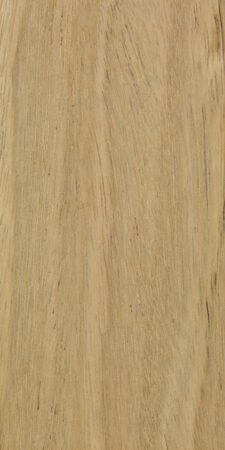
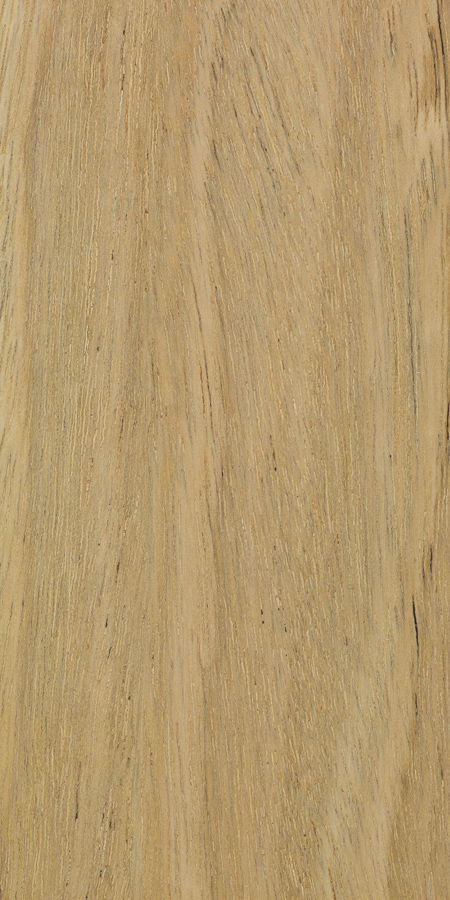
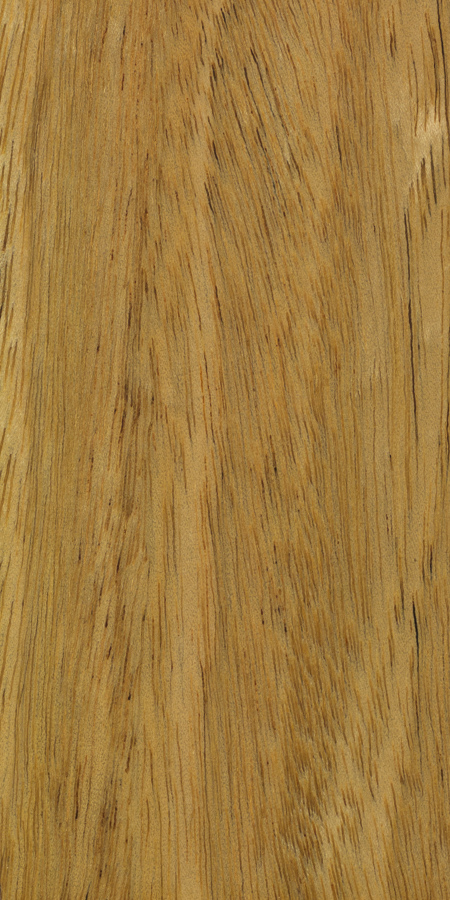
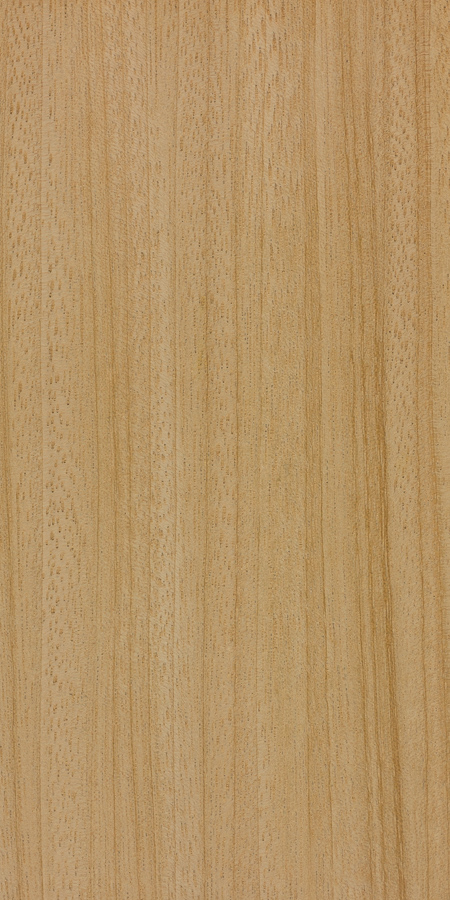
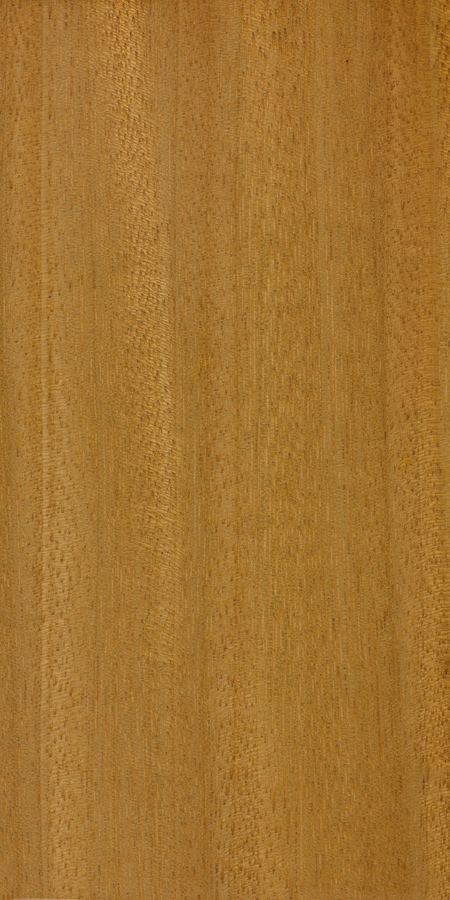
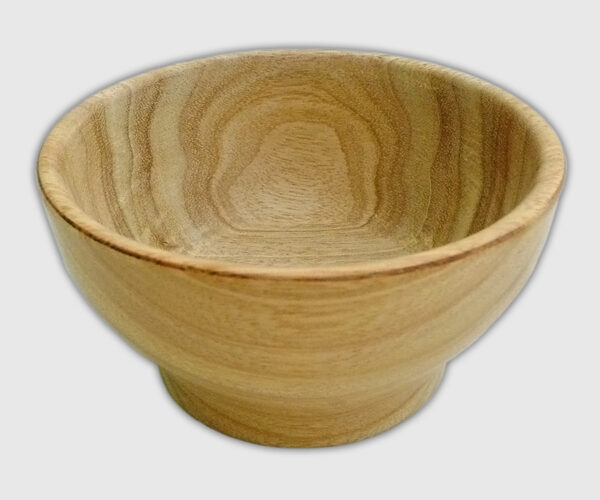
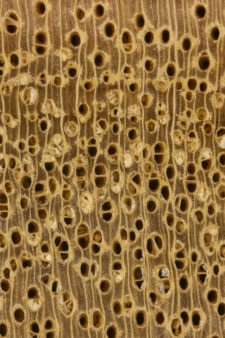
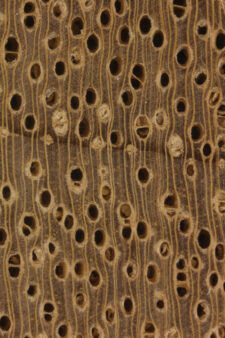


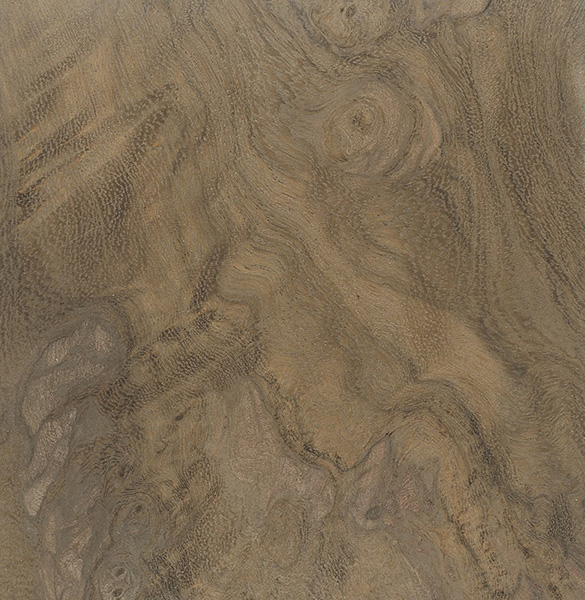
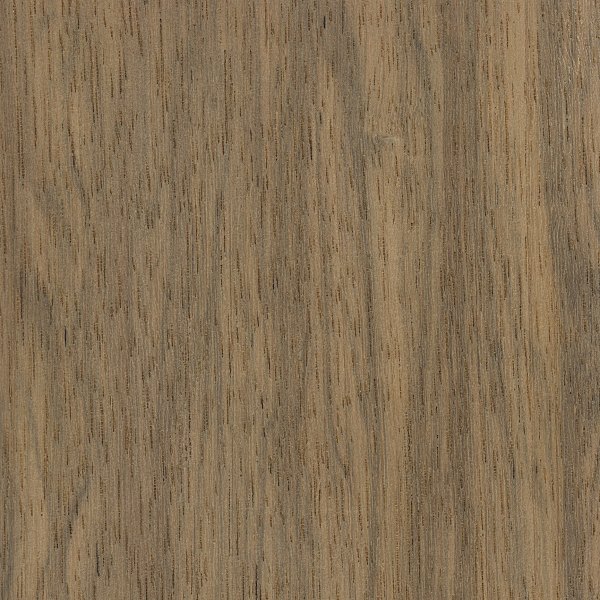
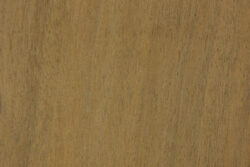
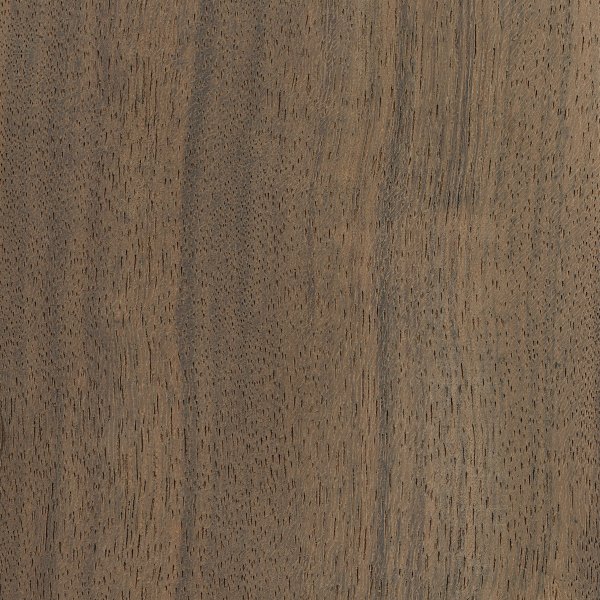
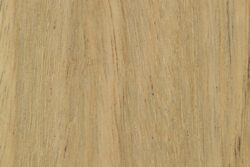
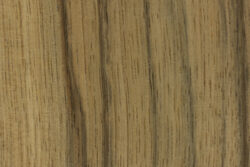
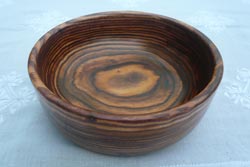






Is idigbo wood the only one that has the yellow dye when wet? Does amboyna also release a yellow dye when wetted? What would you suggest I seal it with as I have it as a sink surround in my kitchen. Have tried Osmo wood wax finish clear extra thin but it very quickly looks bad and blisters on the draining area.